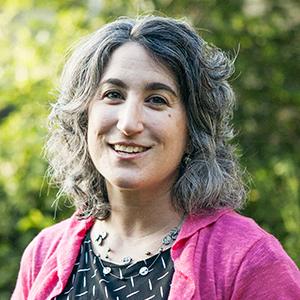Teaching Introduction to Judaism courses is among my favorite things to do, and many of my colleagues feel the same way. There’s nothing quite as gratifying as sharing what we love with other adults: exploring Jewish wisdom, addressing questions and curiosities, participating in deep, meaningful conversations, and often helping students find the right Jewish community – one in which they engage fully and authentically, and are shown they are valued and welcomed.
Introduction to Judaism provides a forum to ask Jewish questions, learn basic Jewish vocabulary, gain intellectual and experiential knowledge of Judaism, and acquire skills to “do Jewish.” The curriculum includes Jewish holidays and life cycle ceremonies, Jewish beliefs and values, prayer and Jewish texts, the Holocaust, modern Israel, the American Jewish experience, and the diverse tapestry of the Jewish people today. Often, students enjoy a class Shabbat dinner, meet program alumni, and gather with students who are exploring Jewish conversion.
Although students’ reasons for enrolling in the course are as unique as they are, they often include exploring conversion to Judaism, supporting a partner from a different faith background, filling in gaps in their own Jewish education, or returning to Judaism after years away. “No matter why you’re taking this Introduction to Judaism course,” I tell them at the start of each new course, “your reasons are the right reasons, and now is the right time.”
I also generally begin with a bit of Jewish learning, often this favorite text, which is a popular story from the Mishnah, a code of Jewish teachings from about 2,000 years ago:
A skeptic comes to Rabbi Hillel and insists, “Teach me the whole Torah while I’m standing on one foot.” In other words, “Teach me everything there is to know about Judaism in a relatively short amount of time.”
Hillel is up to the challenge. He replies, “Do not do unto others as you would not wish done to you.”
Of course, every religion and faith tradition has a version of “The Golden Rule,” but in my classes, we also explore the rest of Hillel’s quote: “All the rest is commentary. Now go and study.”
As Hillel implies, the way we treat one another is at the heart of Jewish teaching, but it’s not that simple. Relationships – and the feelings that accompany them – are complicated. What’s more, knowing the right thing to do is often complicated as well. During the Introduction to Judaism course, we literally “go and study” by exploring the commentary. And no matter the length of the course, there’s always more to learn and more to study.
Only after we’ve studied that brief passage together, do I invite class members to introduce themselves and share – if they wish – their reasons for joining the course. Many students are taking the course with a partner – some because they’ve fallen in love with someone who is Jewish and want Judaism to be part of their family life and others because they want Jewish knowledge to help inform those decisions. Often, students announce upcoming wedding dates, and it’s not usual to celebrate a pregnancy or birth during the span of the course. Couples are encouraged to share these joyous occasions throughout the course experience.
Indeed, no matter what brings you to the course, we look forward to welcoming you to Introduction to Judaism!
New courses start year-round at Reform congregations throughout the United States and Canada. Find an Introduction to Judaism course in your area. No course in your area? Learn about our URJ Introduction to Judaism online course.
Explore Jewish Life and Get Inspired
Subscribe for Emails
